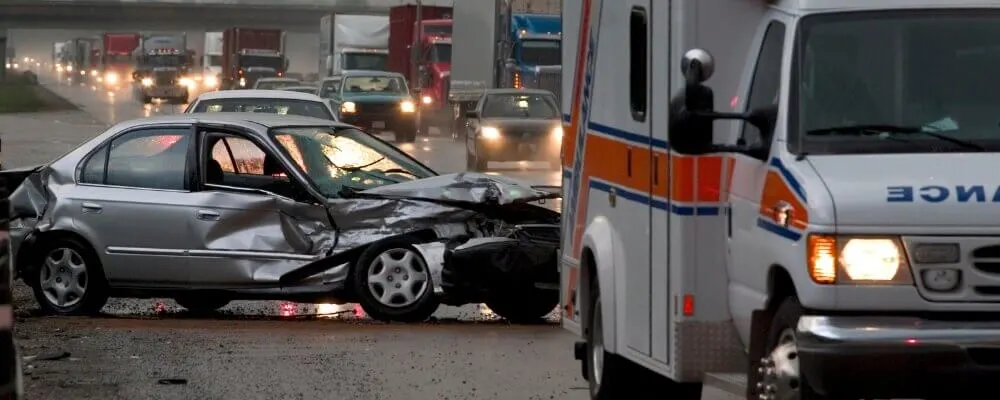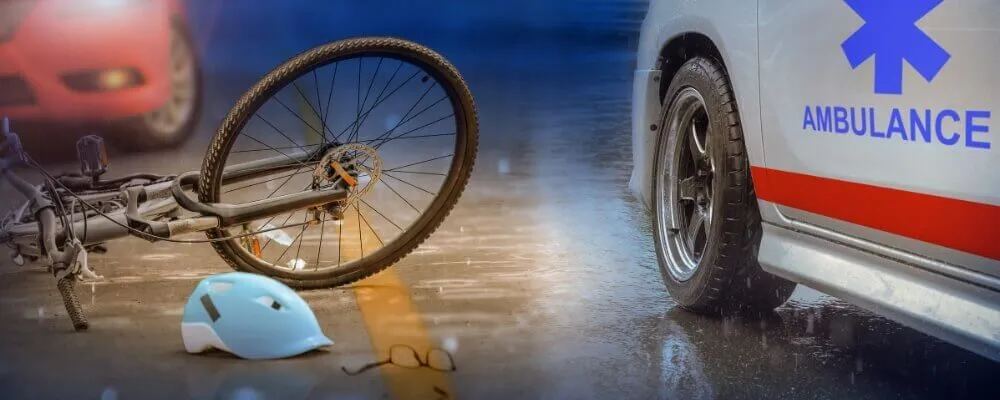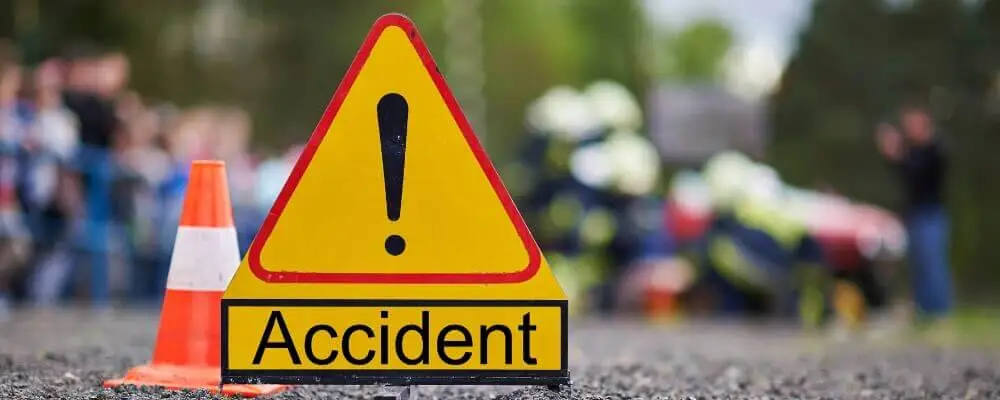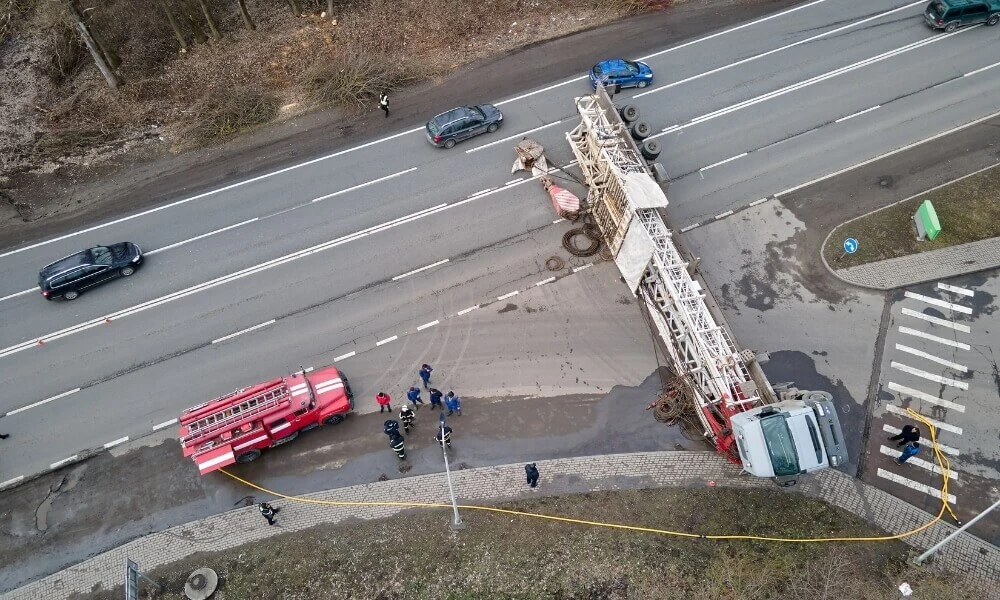Every year, countless lives are impacted by road accidents, highlighting the urgent need for comprehensive strategies to enhance road safety. Whether you’re a seasoned driver or a pedestrian navigating busy streets, road accidents can happen to anyone. The statistics are sobering – a startling number of injuries, casualties, and fatalities occur due to accidents that could often be prevented. This pressing issue calls for a collective effort to implement effective solutions that mitigate risks and create safer road environments for everyone.
In this blog, we delve into 15 crucial solutions to reduce road accidents and enhance road safety. From education and enforcement to technological advancements and community engagement, each solution plays a vital role in addressing different aspects of accident prevention. These strategies are not just theoretical concepts; they hold the potential to make a tangible impact on the lives of countless road users.
Join us as we explore these solutions encompassing various approaches, from educating individuals about responsible road behavior to implementing advanced technologies that streamline traffic flow. By understanding and implementing these solutions, we can collectively reduce accidents and create a road culture that prioritizes safety above all else.

15 Solutions To Road Accidents | Ways To Reduce Accidents
Preventing road accidents is crucial for the safety of all road users. Here are 15 solutions to help reduce accidents and improve road safety:
1. Education and Awareness Campaigns
Launching comprehensive education and awareness campaigns is essential to foster a culture of road safety. These campaigns should target all road users, including drivers, pedestrians, and cyclists. They should emphasize the importance of understanding and following road safety rules, recognizing potential hazards, and practicing responsible road behavior. Through these campaigns, individuals can become more aware of their role in preventing accidents and minimizing risks.
2. Strict Law Enforcement
Enforcing traffic rules and regulations is a critical aspect of accident prevention. Stringent enforcement sends a clear message that violations will not be tolerated. Penalties for speeding, reckless driving, driving under the influence (DUI), and failure to wear seatbelts must be consistently applied. This discourages dangerous behavior and instills a sense of accountability among road users, leading to safer road practices.
3. Advanced Driver Training
Introducing advanced driver training programs goes beyond basic driving skills. These courses enhance drivers’ abilities to anticipate and react to potential hazards. Techniques such as defensive driving, maneuvering in challenging situations, and understanding the limitations of vehicles can significantly reduce the risk of accidents. Equipping drivers with these skills makes them better able to navigate complex traffic scenarios safely.
4. Improved Infrastructure
Investing in well-designed infrastructure is crucial for accident prevention. Roads should be designed with safety in mind, incorporating features such as proper signage, clear road markings, and well-lit streets. Adequate pedestrian crossings, pedestrian-friendly pathways, and designated cycling lanes create a safer environment for vulnerable road users. Properly designed infrastructure reduces confusion, minimizes conflicts, and mitigates the likelihood of accidents caused by inadequate road layouts.

5. Pedestrian and Cyclist Safety
Prioritizing the safety of pedestrians and cyclists is essential to reduce accidents involving these vulnerable road users. Designing and implementing dedicated lanes and crossings for pedestrians and cyclists provides them with safe spaces to travel. Simultaneously, public awareness campaigns can educate pedestrians and cyclists about their rights and responsibilities on the road. Encouraging mutual respect and understanding among all road users fosters a harmonious coexistence and reduces the risk of accidents.
6. Speed Limit Control
Implementing and enforcing appropriate speed limits is crucial in reducing accidents caused by excessive speed. Speed limits should be determined based on road conditions, population density, and safety requirements. High-traffic areas, residential zones, and areas with pedestrian activity should have lower speed limits to ensure the safety of all road users. Enforcing these speed limits through regular patrolling, speed cameras, and penalties for violations encourages drivers to adhere to safe speeds, reducing the severity and likelihood of accidents.
7. Intersection Management
Improving the design of intersections plays a pivotal role in minimizing collisions at junctions. One effective solution is the installation of roundabouts, which promote a smoother flow of traffic and reduce the risk of high-speed collisions. Optimizing traffic flow at intersections involves well-marked lanes, clear signage, and synchronized traffic lights. By enhancing visibility, reducing blind spots, and promoting orderly lane changes, intersections become safer for all vehicles, pedestrians, and cyclists.
8. Distracted Driving Laws
Enacting and enforcing laws against distracted driving, particularly the use of mobile phones, is essential to combat the rising number of accidents caused by drivers not fully focused on the road. Such laws prohibit using handheld devices while driving, including texting, calling, or browsing. By creating strict penalties for violations and conducting awareness campaigns about the dangers of distracted driving, drivers are encouraged to prioritize their attention on the road, reducing the risk of accidents.

9. Seatbelt Enforcement
Stricter enforcement of seatbelt laws is a fundamental aspect of ensuring road safety. Seatbelts are proven to save lives and minimize injuries in an accident. Regular seatbelt usage campaigns can emphasize their importance and the legal requirement to wear them to encourage compliance. Law enforcement agencies should consistently enforce seatbelt laws and issue fines for non-compliance. By making seatbelt usage a non-negotiable habit, the risk of severe injuries and fatalities in accidents can be significantly reduced.
10. Regular Vehicle Inspections
Mandating periodic vehicle inspections is vital to ensure that all vehicles on the road meet safety standards and are roadworthy. These inspections assess crucial components such as brakes, tires, lights, and emissions. By identifying and rectifying potential safety hazards, vehicle inspections contribute to preventing accidents caused by mechanical failures. Such inspections can also help drivers stay informed about their vehicle’s condition and address any issues promptly, promoting safer road experiences for all.
11. Drunk Driving Prevention
Implementing sobriety checkpoints is an effective strategy to deter and catch drivers operating vehicles under the influence of alcohol. These checkpoints involve law enforcement officers stopping vehicles to conduct tests for alcohol impairment. Coupled with this, awareness campaigns should promote responsible drinking habits and the dangers of intoxicated driving. By combining enforcement with education, communities can curb accidents caused by impaired driving. Preventing drunk driving saves lives and ensures the safety of all road users.
12. Smart Traffic Management
Leveraging technology for smart traffic management offers a proactive approach to accident prevention. Traffic cameras, sensors, and real-time traffic data can monitor traffic flow, congestion points, and unusual patterns. With this data, authorities can adjust traffic signal timing, redirect traffic, and implement diversions to reduce congestion and the risk of accidents. Smart traffic management also enhances emergency response times, ensuring prompt assistance in case of accidents or road incidents.
Also Read: Workplace Accident Report | Which Key Information To Include

13. Strict Helmet Laws
Enforcing helmet laws for motorcyclists and cyclists is crucial to protect vulnerable road users from head injuries and fatalities in two-wheeler accidents. Helmets are proven to reduce the severity of head injuries significantly. Stricter enforcement of helmet laws ensures that riders prioritize safety. Awareness campaigns can educate riders about the importance of helmets and their role in preventing life-threatening injuries. By making helmet usage mandatory and promoting its significance, communities can enhance road safety for motorcyclists and cyclists.
14. Public Transportation Enhancement
Developing and promoting reliable public transportation systems offers a sustainable solution to reducing overall traffic volume. Well-connected and efficient public transportation encourages people to opt for safer alternatives to personal vehicles, especially for daily commutes. Enhanced public transportation systems also alleviate traffic congestion, leading to fewer accidents caused by traffic jams. By making public transport accessible, convenient, and affordable, communities can encourage a shift toward safer modes of travel.
15. Community Engagement
Involving local communities, schools, and organizations in road safety initiatives creates a shared responsibility for road safety. Community engagement can include workshops, seminars, and awareness campaigns that educate individuals about safe road behaviors. Schools can integrate road safety education into their curriculum, fostering responsible road habits from a young age. When communities actively promote road safety, a collective effort is formed to prevent accidents, encourage adherence to rules, and prioritize the well-being of all road users.
Conclusion
In road safety, knowledge is power, and proactive measures are key to preventing accidents. The 15 solutions we’ve explored here are not merely theoretical concepts; they are practical steps that communities, authorities, and individuals can take to significantly reduce the occurrence of road accidents.
Every solution contributes to a safer road environment, from education campaigns that instill responsible road behavior to stricter law enforcement that deters risky actions. Advanced driver training equips individuals with the skills to navigate challenging situations, while improved infrastructure ensures roads are designed with safety in mind.
The importance of pedestrian and cyclist safety, preventing distracted and drunk driving, and enforcing seatbelt and helmet laws cannot be overstated. By embracing technology through smart traffic management and advocating for reliable public transportation, we can collectively reduce traffic volume and congestion – both contributors to accidents.
Above all, community engagement cements road safety as a shared responsibility. Involving local communities, schools, and organizations cultivates a culture where road safety concerns everyone. Through these collaborative efforts, we can create an environment where accidents become increasingly rare occurrences.
As we conclude this exploration of 15 solutions to road accidents, let’s remember that the choices we make on the road hold the potential to save lives and spare countless families from the pain of loss. By prioritizing road safety, we can build a future where accidents are minimized and every journey becomes a safer, more enjoyable experience for all.

